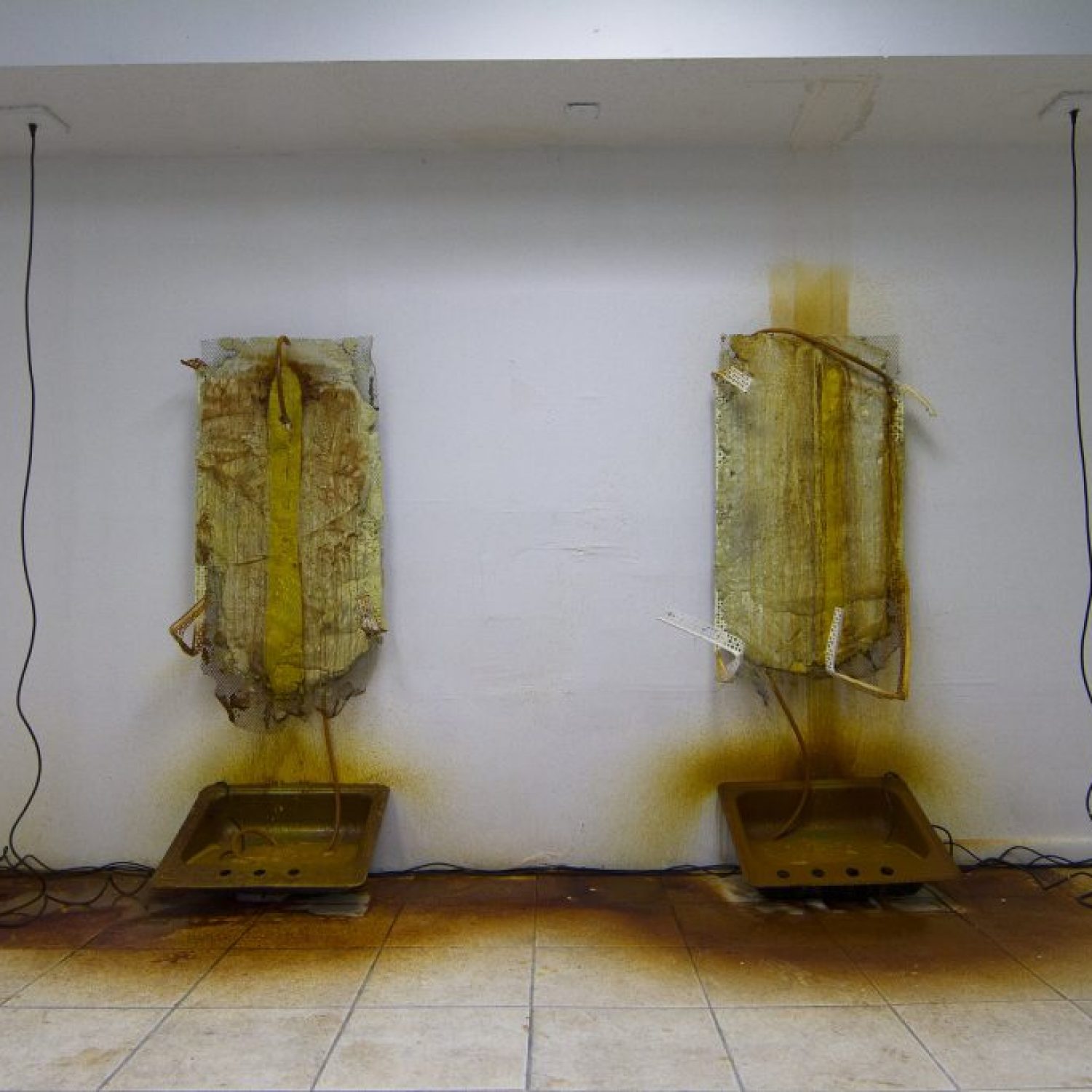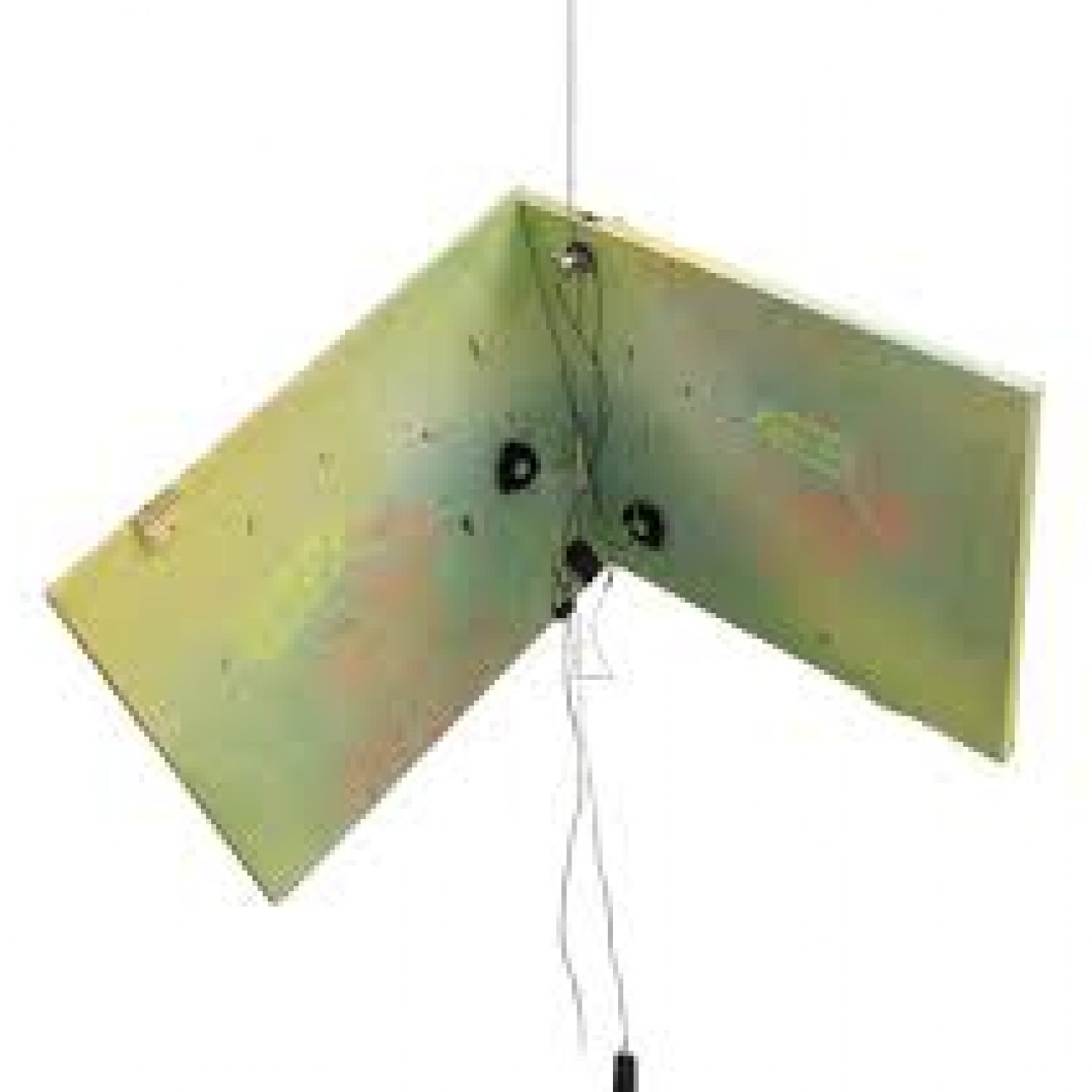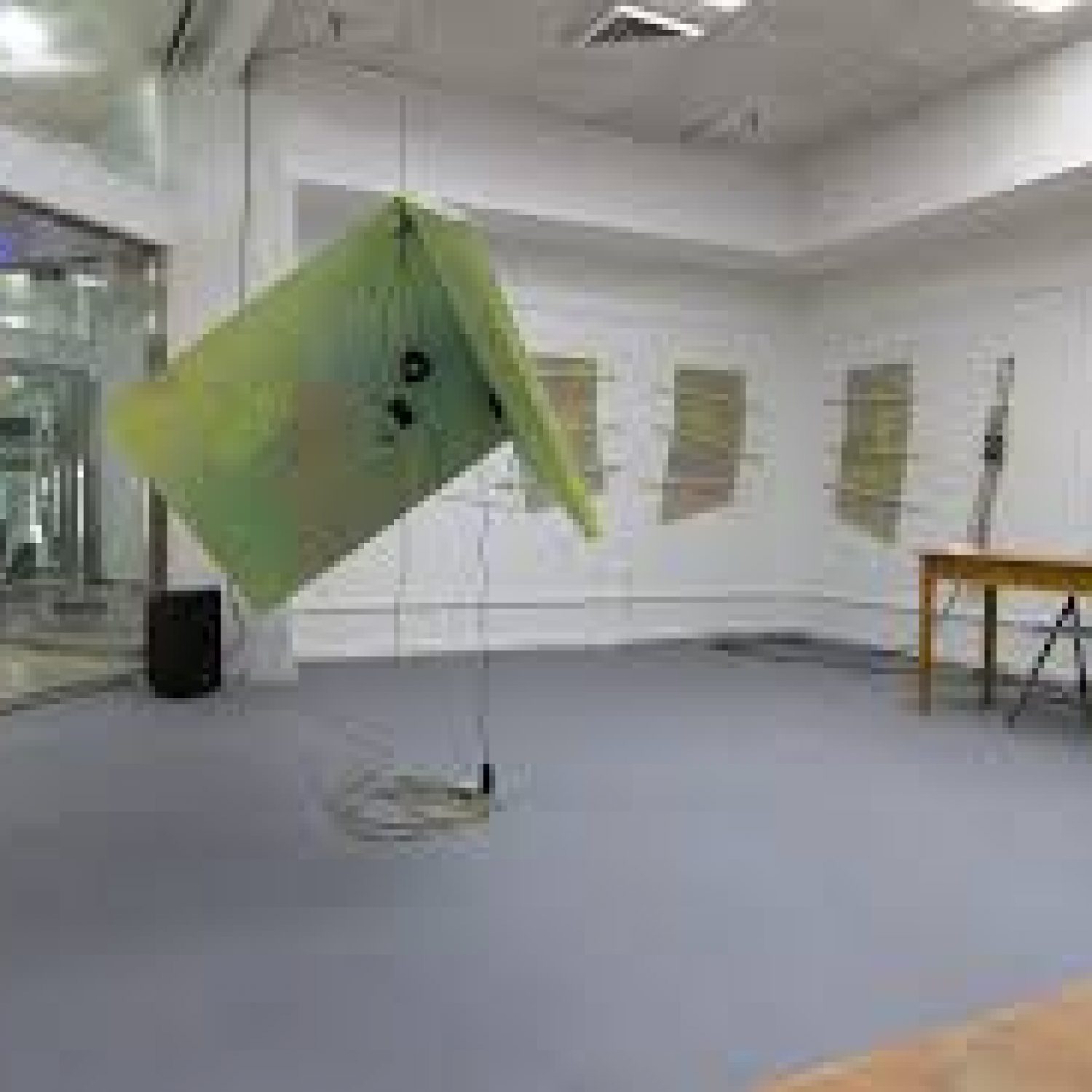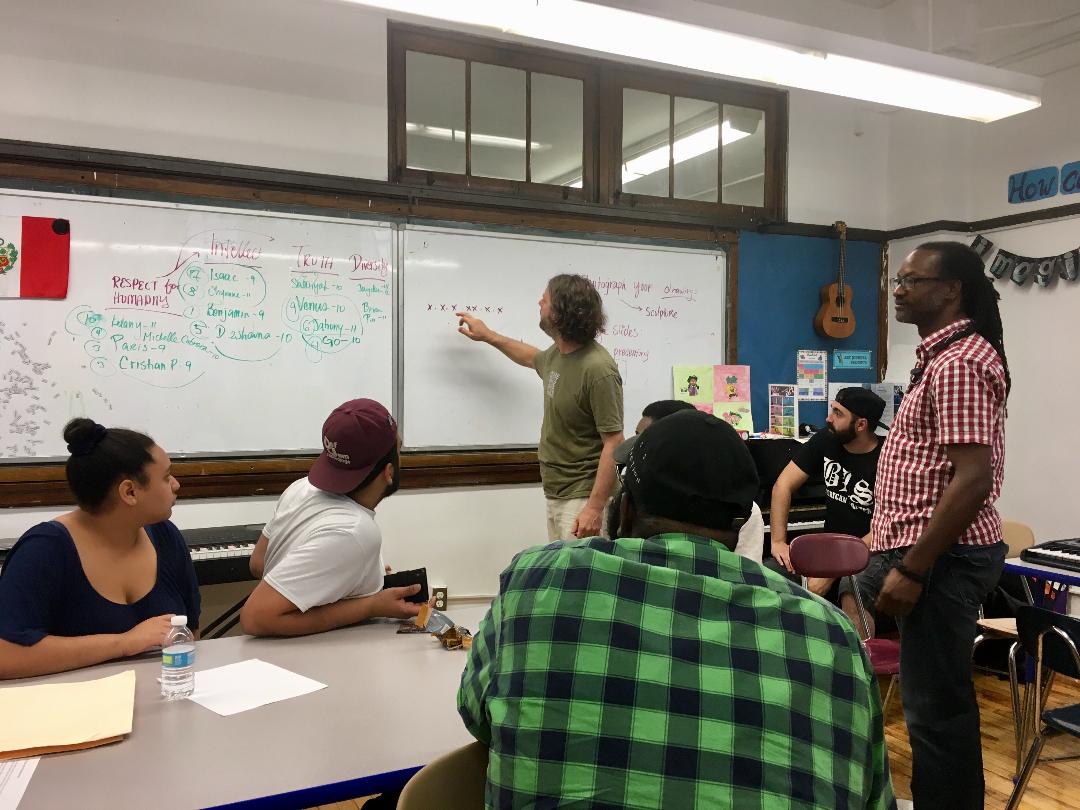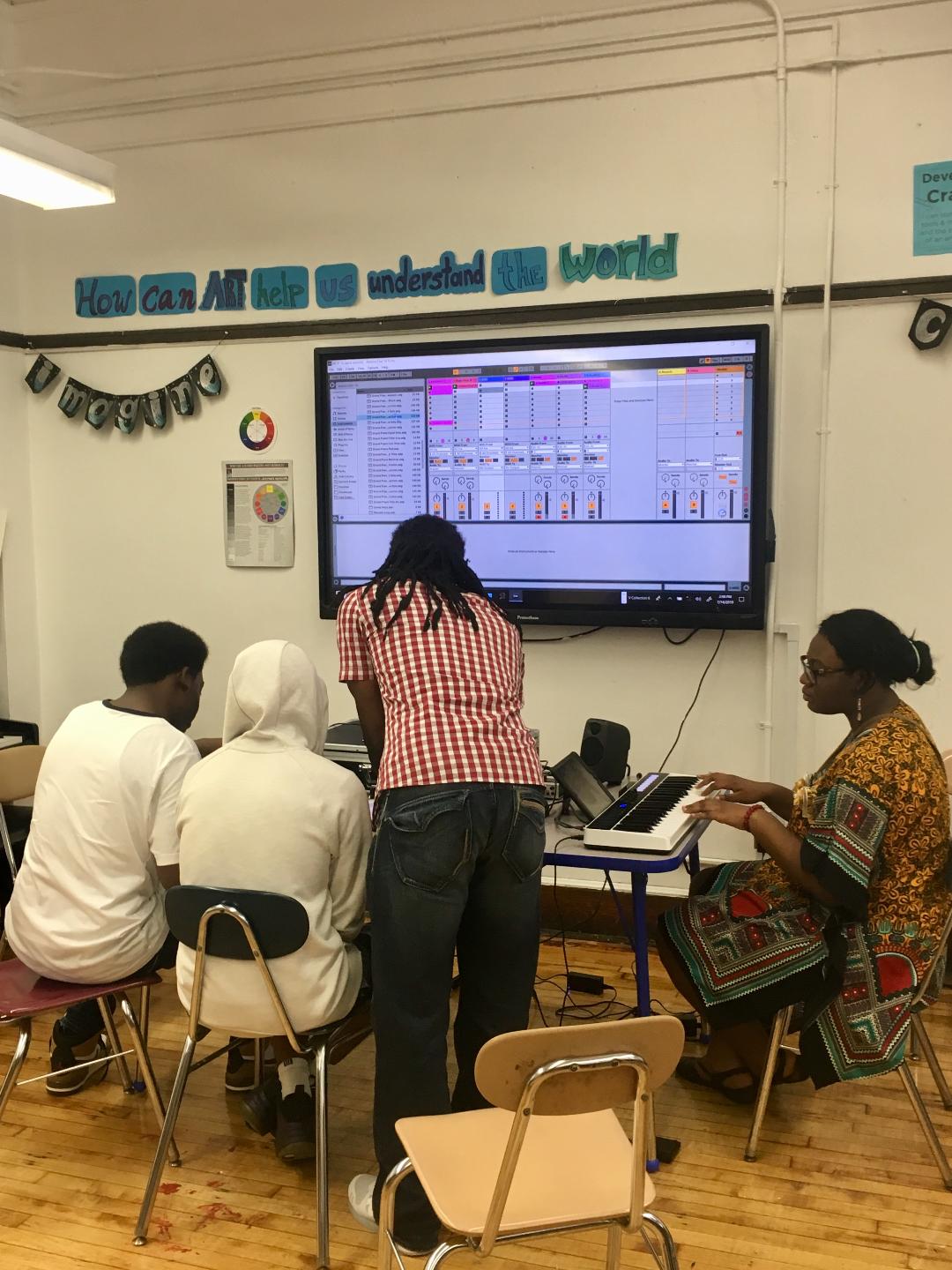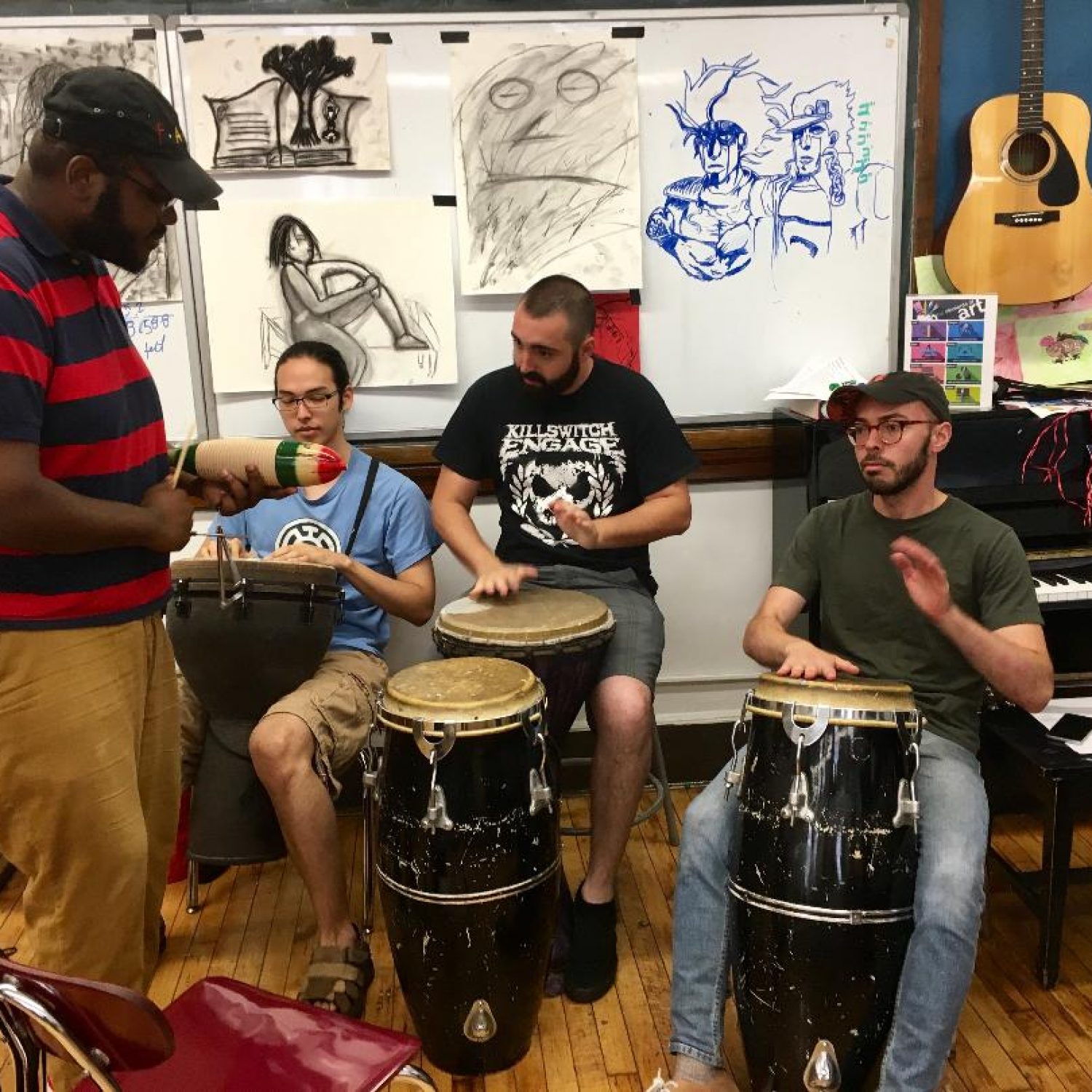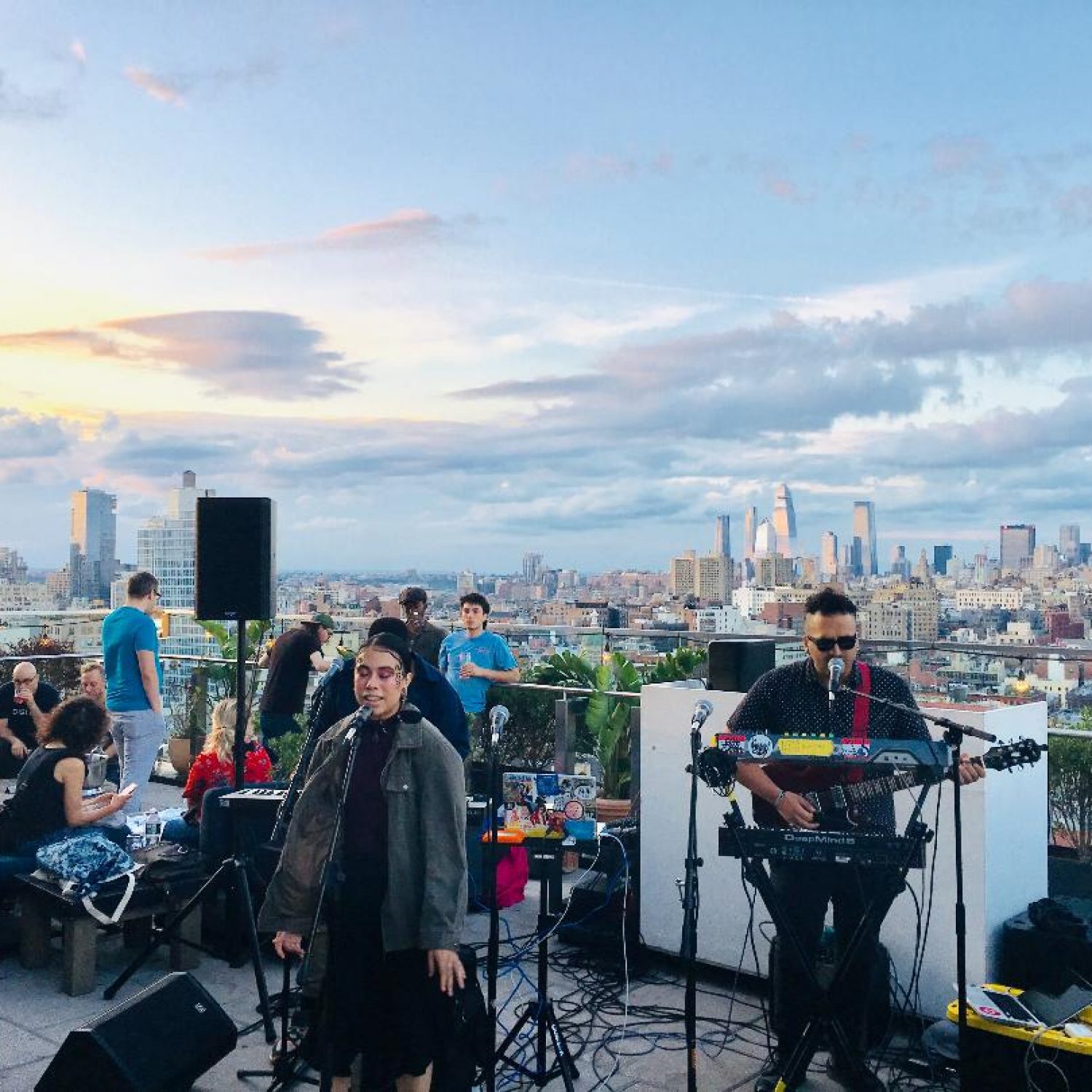- 5 years ago
-
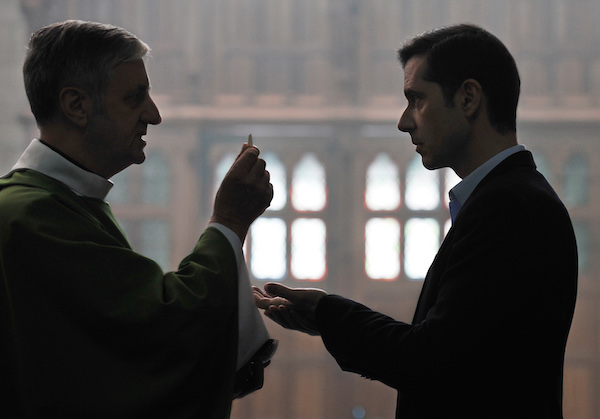
Music Box Films Known mainly for his psycho-sexual dramas (Under the Sand, Swimming Pool), François Ozon’s new film, By the Grace of God, is a surprisingly straightforward and relatively fast-paced crime drama based on recent news events that still dominate headlines in France. The film details the efforts of three men from Lyon to seek justice, having been sexually abused as children by the same priest . Well-acted, rock-solid and even suspenseful, the movie is reminiscent of 2015’s Oscar-winning Spotlight, about reporters from the Boston Globe investigating a similar cover-up by the Archdiocese of Boston. In By the Grace of God, it’s the victims themselves who initiate and carry out much of the detective work, at the same time confronting their own religious beliefs (or lack of), and residual trauma. It’s a powerful and poignant movie highlighting the struggle of sexual-abuse victims in a country where the Catholic Church is a hugely dominant institution.
We first meet Alexandre (Melvil Poupaud), a successful, religious father of five, as he learns that Father Bernard Preynat, the local priest who abused him years ago, is still working with children. Through a series of letters (voice-overs convey the copious correspondence that set events into motion), he arranges a meeting with the now elderly Preynat (Bernard Verley). The priest doesn’t deny the allegations and admits that there were many other victims, defending himself by asserting that he has a disease and has sought treatment for it. He doesn’t, however, ask for forgiveness, which seems to be more of a concern to Church officials than making sure the crime never happens again. Instead of being defrocked, Preynat has been shuffled from parish to parish over the years, as was so often the Church’s way of handling things. (He has since been defrocked for his deeds, though his criminal trial has yet to take place). In Alexandre’s case, France’s statute of limitations prevents him from pressing criminal charges.
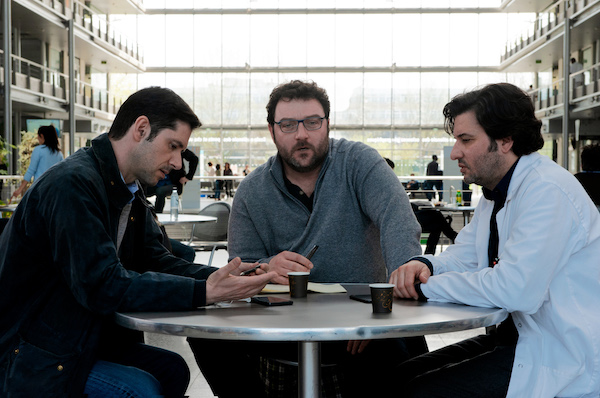
Music Box Films Undeterred, Alexandre becomes a man on a mission, next corresponding and meeting with Cardinal Barbarin (François Marthouret), who was Preyat’s supervisor. As is the case with other Church officials, the Cardinal is very sympathetic, but doesn’t do much beyond praying. He denies that he knew about the extent of Preynat’s crimes. (Barbarin has since served a suspended six-month prison sentence, having been convicted of failing to report sex abuse.) Alexandre also encourages a childhood friend and fellow victim to testify. Though his wife and sons join his mission, Alexandre’s mother is infuriatingly unsupportive, accusing him of “stirring up shit.” Why dig up old stories, others wonder.
Finally Alexandre files a complaint with the Lyon District Attorney’s office, which begins contacting younger victims. The story now moves to the burly François (Denis Ménochet), who initially doesn’t want to testify, then becomes increasingly outraged about the fact that Preynat is still active. He contacts local press and gets to work (Ménochet is wonderful as the droll, energetic François, an atheist who claims he doesn’t hate the Church). He hunts down more victims and and starts a group for these men and their families. Eventually François identifies the man who filed the initial complaint, and his resulting alliance with Alexandre is an exciting development.
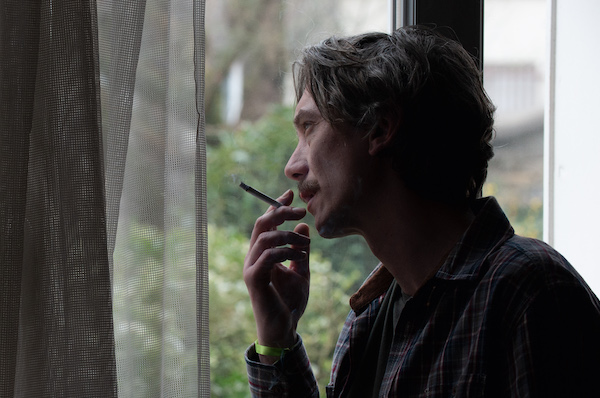
Music Box Films Finally, there is Emmanuel (played with exquisite sensitivity by Swann Arlaud), who has been so traumatized by his experiences with Preynat that he has a seizure when first confronted with the news of the allegations. Despite his emotional frailty, he goes to the police and tells his sad story, which involves lingering physical scars.
The joining together of disparate personalities from different backgrounds, along with their families, isn’t a seamless operation, as the men argue about methods and next steps (at one point François wants to hire a sky writer to draw an obscene image in the sky). But they all have had horrible experiences with the same perpetrator, and they all want to make sure that it doesn’t continue. Ozon’s portrayal of their struggle in the face of a disproportionately powerful institution makes for a compelling story.
By the Grace of God opens on October 18 at Film Forum and Landmark 57.
—Marina Zogbi
Latest News
- 5 years ago
-
Rafael Vargas Bernard is a young, humorous, creative residing in Miami, Florida. His work integrates performance, installation, sculpture and technology in ways that invites the viewer to both work with technology and listen into a mechanism that may provide some fresh answers to the present and future. His mannerisms are swift and direct and his intentions include the environment, all types of people and probabilities of success and failures into his work.
All photos: Mana Contemporary, Artist’s studio
BB: By investigating your work, I found that your work examines the collapse and regeneration of a system/s. What I mean by that is by the structure or infrastructure collapses or destroys our reality, yet the destruction provides an opportunity for us to re-create something newer, and in your work, you do that. You create these sculptures with these robotic mechanisms that provide a new way of working. That creates a whole new language of work-ability, functionality, and structure. Do we want governmental and socioeconomic structures to collapse? Look at Venezuela, Cuba, and even Italy. These countries are facing comic strife and are in debt billions of dollars. The structure of leadership is a culprit to the corruption that exists in the economy and segregation that exists between communities. We live in a democracy that dismisses our constitutional rights and voting power. The question comes down to: will the people have the capacity to enforce their infrastructure to build the skeleton needed for the broader structure? Will “we the people” really do for the people? Is your work a metaphor to teach the viewer how to work with a new system? Is this the only window we have to prove that something new is waiting on the other side?
RVB: I consider my interactive work a call to action challenging the passive participant (viewer) to become an active participant; not only to work with a new system, but to question it and become an integral influential part of a system. My automated work has a similar approach but focuses on participation through analysis and reaction.
BB: When I look at Air Guitar synth stick, you built a sculpture that replaced an iPhone, an old record player, and cassette player. This Devo-sculpture (as I term it) is pure garbage delightfully reinvented and an example of seizing a moment of chaos and destruction to showcase humanity’s intelligence by presenting how to reinvent the wheel.
I enjoy that you allow the public to participate in your work. More specifically, in your works where there is robotics. Now I know that some produce sounds and those sounds maybe something that we are familiar with or unfamiliar with. So you provide a space for the public to hear this. Moreover, within those sounds, I am sure that messages are emitted but do you think the audience is fit and ready to receive? Are we all on the same level and have the capacity to perceive those unconscious sound-waves that can give us more information and data on things that we need to do for ourselves as humanity? I am very critical on this topic. People’s behaviors and social tendencies have destroyed my reality and sense of hope. I think that it is wise to psychologically challenge the viewer/opponent by informing them we are not competent enough to come out the other side, smarter, better, and wiser. I think society flaunts a self-righteous and empty attitude of “positive vibes” and evolution.
RVB: The sounds emitted by my works are directly related to and produced by the systems they are a part of and often directly affected by the participant’s actions. Although the generative process and aesthetic of the sounds in my works are constructed from an intellectual and conceptual perspective, the intention is that the effect of these on the participant be abstract and emotive.
BB: Although I love the participatory opportunities, you extend to the public, my concern is; if we know our systems fail because humans err inequity, why continue giving them chances-even at play? What I critically mean by this is that not everyone has the structure within themselves to recreate or regenerate systems that benefits others too. What I see is the omission of expected or required action. The collapse of systems is a chance for others to make it better for themselves. Societies live in the constant state of Ouroboros. Through the process of collapse or devouring ourselves, a new wholeness is found, well, at least we would like to believe this idea. On May 19th you posted the image of a sculpture. The sculpture has a yellow hue, a few cables and suspended in midair. When looking at the piece, I found a few things.
One, that it resembles a chair, and a chair is an object that is designed to be practical for the user. The second thing I found about the sculpture is that it omits sound (is this correct)? The third feature I noticed is how the sculpture seems right about to fold into itself. The fourth and fifth characteristics are the sculpture serves as a shelter, a home of protection nd solace or as an object to cowardly shield oneself from outside elements- too afraid to confront. It resembles the roof of a house. One can either protect themselves from outside elements or utilize it hide underneath itTherefore I concluded that: we sit back to receive accurate or inaccurate information that may be practical for our comfort or the poison to the demise of the structure. Am I analyzing your work on a whole other level, or is my analysis somewhat correct?
RVB: Close enough to be correct
BB: Culture is learned behaviors and ways of being because we are “born into it.” Systems are cultures. Many of us are accustomed to these ways, and there is a behavioral tendency or rather a “culture of comfort” as anthropologist Sarah Mahler explains that we do things based on patterns, things we know or are born into. One of those patterns is failure. The other is a success. It is the human species that has the mental capacity to reason, but we selfishly make our immediate environments, comfortable systems for ourselves because it what we inherit and know. When I examine your work, it is apparent that you are allowing a mechanical device to explore a collaborative effort with the human race. An effort that benefits both entities.I do not think that artificial intelligence is comfortable for any of us (except for those of us born into it: which is the true meaning of “culture”). We are forced to face a culture of technology we have to slowly adapted to and have done so since the 80’s (publicly). Should AI (artificial intelligence) or robotics be given a chance to change our perception to collaborations and how that can benefit us in the present to the future? After all, humans seem handicap in many areas of labor and community.
RVB: AI, AR, and robotics can help us be more productive and achieve tasks impossible without their help, but they can also make us comfortable to the point of slothfulness. We should be actively conscious of our changing systems and perceptions and take an active part in how we evolve and change as a society.
BB: In History class and the media, we are reminded of humanity’s horrifically violent failures. Do your mechanisms provide the viewer to an opportunity to acquaint themselves to a mechanical future- a future where the structures tend to industrialize our ability to repair and function properly? Why give the public the power to work with such an idea of empowerment when perhaps the audience is comfortably numb and seeking a sense of entertainment in art? Do you think they take the message seriously once they have participated with your work?
RVB: I have learned to not expect. Humans are humans and will do whatever meaningless random thing satisfies their whims. My intention is to give an opportunity for direct influence over a system as a method for engaging and empowering. A person may or may not take advantage of this opportunity. The work can still be appreciated by experiencing it in use by someone else or inactive/dormant. As in “real” life, one can be present and passive and be satisfied with an incomplete or superficial experience. The viewer has the option to be as active and experience as much as they want to. No matter what, it’s still Art and it’s still entertainment.
BB: Some of your work reminds me of prosthetics. There is a photo on your Instagram page uploaded on May 4th where you state “Got some new helping hands.” It is funny. Your assistant is only temporary and quite practical at the moment. Many of your pieces brilliantly portray the temporal environment and material (found in the fleeting moment of despair and debris) into probable, sophisticated arrangements that serve to function. I know that a large part of your creative interventions stemmed from the disaster following hurricane Maria. Although it was a dark moment and a far cry from the Emerald City, your sense of humor quenched all thoughts despair into one of finding solutions to the problem. Have you always seen the rainbow and the pots of gold in your life, or did that particular incident in your life transform you into your better version?
RVB: I have always used humor to deal with difficult subjects. But, after living through the aftermath of Hurricane Maria; plus other things that were going on in my life during that time, I was better able to see the solutions, opportunities, and positive aspects of this shit-storm called life.
BB: Rafa, you are funny.
by Belaxis Buil
- 5 years ago
-
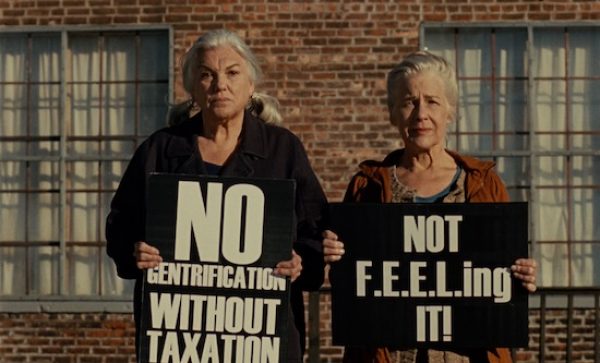
In the Family LLCWriter/director Patrick Wang’s A Bread Factory, available in two parts via VOD this Tuesday, is a sprawling, quirk-filled ensemble film that attains a kind of greatness by its conclusion. With its many interlocking characters and plot threads, lengthy monologues, and a generous dash of absurdity (especially in Part 2), the film can sometimes feel a little unwieldy. However, A Bread Factory (the title refers to a fictional small-town arts space) is full of droll wit and affection for both its characters and for theater in general, resulting in a highly watchable four hours. Filmed like a play, with static camera angles and no soundtrack, the film is as visually simple as it is narratively complex.
At the heart of the A Bread Factory are Dorothea (Tyne Daly) and Greta (Elizabeth Henry), a older couple who have devoted their lives to running Checkford’s humble arts space, housed in, yes, a former bread factory. The women and town are shaken and stirred by the recent arrival of May Ray, a ridiculously over-the-top performance-art couple (Janet Hsieh and George Young) who have opened their own slick space, Forum for the Exercise of Experience and Living (FEEL). Some townspeople are intrigued by May Ray’s otherworldly, highly synchronized performances, while others are scornful. At stake is the arts budget allocation of the local school board, without which the Bread Factory could not operate.
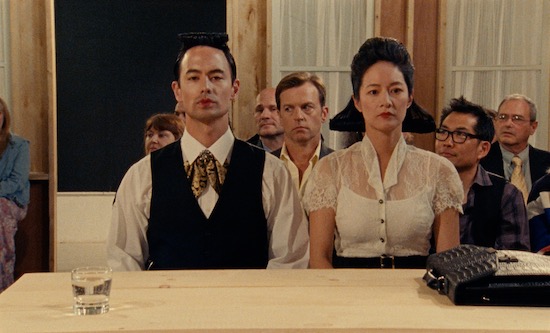
In the Family LLC Part 1: For the Sake of Gold consists of a loose series of vignettes featuring various townspeople and visiting artists involved with the Bread Factory, including cranky film director Jordan (Janeane Garofalo), who is hilariously brash with a class of kids. Interspersed throughout are glimpses of rehearsals for Dorothea’s upcoming production of Euripides’ Hecuba, starring Greta and distinguished older actor Sir Walter (he was knighted), played with gusto by the late Brian Murray.
We meet several other intriguing characters, including Simon (Keaton Nigel Cooke) a precocious young projectionist who works at the space; and forthright Checkford Journal editor Jan (Glynnis O’Connor), who causes a visiting poet to pass out when she flatters him during an interview. (“Poets, you know … he’s famished,” she explains.) Jan takes under her wing budding journalist Max, who we later find out is the son of the new teacher’s rep, who is having an affair with a member of the school board, who is married to the guy who runs the diner, whose daughters figure prominently in Hecuba. Gradually, the characters’ relationships to each other are revealed, which helps explain a lot of the action. (There’s a refreshing lack of exposition in the dialogue, as well as an impressively wide range of ages and physical types represented.) This untangling is part of the film’s fun.
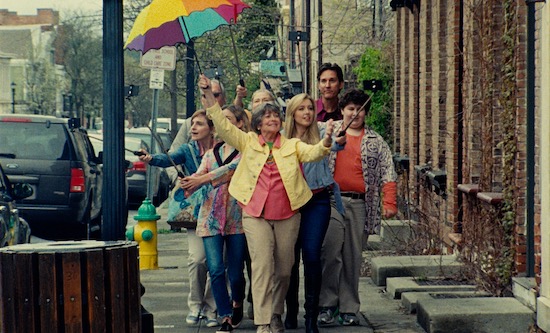
In the Family LLC Part 1 builds to the school board budget hearing, during which numerous people testify, including an amusingly shallow visiting movie star whose testimony is clearly a memorized monologue.
In Part 2: Walk with Me a While, things get (more) surreal as extended singing and tap dancing sequences break out in a few scenes. A character disappears without explanation. There are poetic soliloquies, metaphorical stories told by various characters and some illuminating background on the mysterious May Ray.
When we finally see an actual scene from the Bread Factory’s Hecuba performed, it is powerful and moving, despite the small opening-night crowd. (“It was such a hit in the Renaissance” sighs one character disappointed in the turnout.)
Offbeat and funny, with a great deal of heart and an underlying message about the survival of small arts organizations, A Bread Factory brings to mind both the wonderful Canadian TV series Slings and Arrows and just about any Robert Altman film. Patrick Wang’s creation, however, is very much its own delightful thing.
A Bread Factory is available VOD Tuesday, Sept. 24; on DVD & Blu-ray Tuesday, Oct. 8.
—Marina Zogbi
- 5 years ago
-
I had the great pleasure and fortune for the second year in a row to host and to teach at the Art for Progress Summer Music and Art Program. The program was made possible by a grant from the Pierre and Tana Matisse Foundation, and was open to young people seeking to pursue careers in creative fields. Music and art were made, and a great and enlightening time was had by all this summer. The program consisted of workshops held on four consecutive Sundays in July and August. For each week’s session, we created a unique, interactive space where creativity seemed to be seeping from the walls. Curiosity was inspired and mysteries demystified. Each week featured a professional guest artist in a different creative discipline. Our guest artists shared with us the experiences they each encountered on their journey toward becoming a fully realized professional artist.
The focus of the of the program, in addition to developing specific skills, was once again centered on questions and situations that a professional artist might encounter. The kind, for instance, that might not be intuitive or often addressed in traditional academic settings. Basically, the stuff they don’t tell you in school. We discussed finding your audience, vetting creative ideas, being band-mates as well as friends, and checking your attitude. There were also break out music sessions on topics including electric guitar tone, taught by returning teacher’s aide Franklin Santiago; songwriting, taught by Jason McFarlane, also a returning teacher’s aide and a host of other topics relevant to gigging musicians. For two of the sessions, Jerrell Battle taught digital music production, which was a huge hit. His setup included several different playing surfaces which made it possible for four or five people to jam together on keyboards and beat pads. The music that was being spontaneously created, mostly by people who had never met before, was unreal! It was like we were the hottest club in town on a Sunday afternoon! Jerrell’s sessions were in the same room as Paula Walters Parker’s visual art portion of the program, which is always about incorporating the setting and sound and movement into the art-making process. This created a very cool symbiosis in the room. That symbiosis is inherent to Paula’s approach and was just as fluid and inspiring when the room was animated by guest dancers/models. On top of all this creative interchange, our very special group of guest artists were so gracious to visit us this summer and to give us a window into their lives.
For this year’s inaugural session, we were joined by drummer and philanthropist Billy Martin, who encouraged us to find our own paths to excellence and mastery. His opening “speech,” on pandeiro (a type of Brazilian tambourine), had the whole group engaged and inspired. The piece was a fantastic demonstration of how many different sounds and musical ideas can be articulated on even the smallest, most unassuming instrument. Billy talked to us about finding his way as an artist, and about how he was able to carve a unique path to success by staying true to his own sensibilities.
The following week’s guest artist was jazz bassist Dezron Douglas, who improvised a solo version of the “Game of Thrones” theme. He then invited students to jam with him. He even passed his beautiful upright bass to teaching aide Jason McFarlane. Dezron told us stories of his time coming up in the NYC jazz scene and emphasized the importance of playing as many styles of music as possible in order to always be ready to play what is appropriate for any gig.
For the third workshop of this summer’s program, we welcomed visual and performance artist Michael Alan who shared stories with the group about the unorthodox path he followed toward notoriety as an artist. He shared some beautiful work from his prolific career, and encouraged us to look for opportunities everywhere and most of all to word hard and create work no matter what.
This philosophy was mirrored by our fourth and final guest, photographer Kymbreli Francis, aka Handsome Cupcakes, who explained to us how her career grew organically from her noticing and chronicling the style and flavor of her group of friends through photography. She showed us how her work evolved as her setting changed and as her skills developed. From there, we learned about the nuts and bolts of her technical process.Being exposed to the natural progression of work these artists shared with us, it is clear how each of their unique creative voices has always been the driving force behind their efforts, and has continued to become more refined and pronounced over time.
AFP wrapped up the summer with a fantastic rooftop party, “Labor Of Love,” at The Crown, Bowery 50 Hotel. The band 5!Alive performed which features a member of our summer staff, Franklin Santiago. Gatto, among others, rocked the proverbial decks with energetic DJ sets as we watched the summer end over the glimmering city around us.
As the new school year begins, we are proud to announce a new music program at Harvest Collegiate High School. AFP is providing three guitar classes each day. We have also reinstated a visual arts program at Landmark High School, which provides four visual art classes a day. Our Forsyth High School visual arts program is also going strong. Our music program at Humanities Preparatory Academy is entering it’s eighth year, and we are currently gathering funding to implement a campus wide after school music program at the Bayard Rustin Educational Complex. the complex houses six schools. We aim to provide three days per week of after school programs focusing one day each on vocal work, instrument lessons, and digital music production.We look forward to the year ahead, and to meeting new opportunities to serve New York City’s public high school students with much needed music and arts programming.
-Barry Komitor – AFP Arts Education Program Manager
- 5 years ago
-
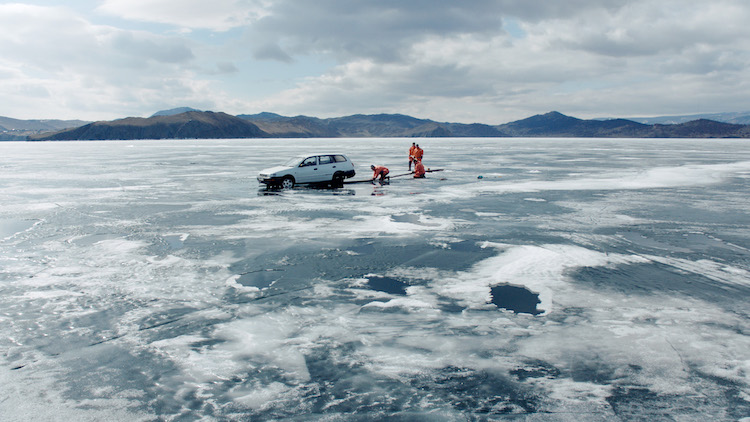
Courtesy of Sony Pictures Classics Though the phrase “cinematic experience” is somewhat overused and should generally be met with suspicion, Victor Kossakovsky’s Aquarela can hardly be called anything else. This startling documentary about the earth’s most versatile element, water, is a mind- and eye-boggling trip, evoking both sadness and exhilaration, among other strong emotions. Shot at 96 frames per second, as opposed to the usual 24 (though theaters are only equipped to show it at 48 fps, at most), its rich visuals are so smooth they sometimes seem like CGI, but there is nothing artificial about this film.
Filmed in seven different countries, Aquarela opens on frozen Lake Baikal in Siberia, where several men are attempting to retrieve something from under the surface. Amid amplified sounds of cracking, groaning ice, it soon becomes apparent that a car has fallen into the lake. As dramatic as this seems, it’s not the last time it happens. We see two more cars speeding along the river as voices yell out “Stop, stop!” to no avail. Turns out that the lake is thawing early this year. This is our introduction to one of the film’s main themes, climate change, though it’s never discussed or openly addressed. It’s also the only scene in the movie with actual dialogue. Human beings, clearly at the mercy of the film’s subject, are not the main focus here. Adding to the strangeness of the scene is a wildly incongruous element of slapstick, as people keep falling through the ice.
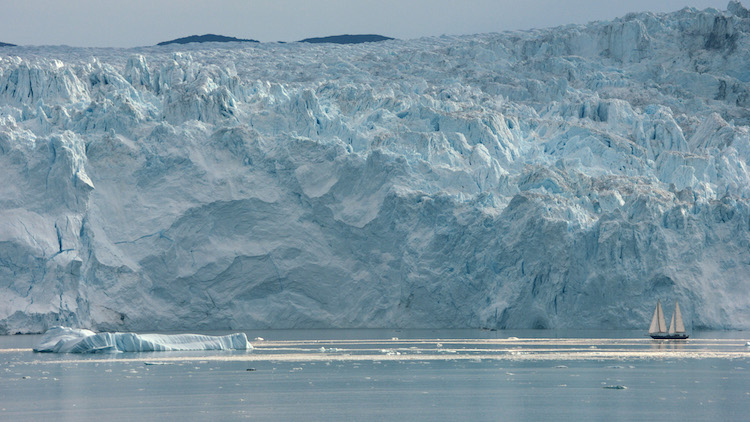
Courtesy of Sony Pictures Classics The film next moves to Greenland, where there are towering glacier formations, the camera lingering on sparkling, geometrical ridges and fantastical shapes. The peacefully majestic setting is constantly interrupted by ice bergs breaking off and collapsing into the sea. The eerie boom and crash of this glacial calving is somehow deeply melancholy, as the bergs float and bob helplessly like slowly dying monsters. Knowing what we know about the polar ice caps, it’s like watching the planet (literally) die, albeit in a spectacularly beautiful fashion.
Next two furiously toiling sailors attempt to tame a schooner that is making its precarious way through thrashing winds and ocean waves. Not for the first time, we wonder about camera placement, realizing that the film crew is in the thick of it. Kossakovsky obviously went the extra mile (or a thousand) to create his astounding vision. The water is now overwhelming—mighty and terrible.
Aside from the constant tinkling, cracking, rushing, crashing water sounds, Aquarela features intermittent musical accompaniment by Finnish composer Eicca Toppinen and his “cello-metal” band Apocalyptica. Both harsh and beautiful, the music is a fitting counterpart to the dramatic visuals.
The film also visits flooded communities in California in the aftermath of the overflowing Oroville Dam, shown dominated by gushing water. There’s an eerie scene of a partially submerged graveyard, with egrets picking their way around the tombstones as if it’s the most natural thing in the world, which it kind of is.
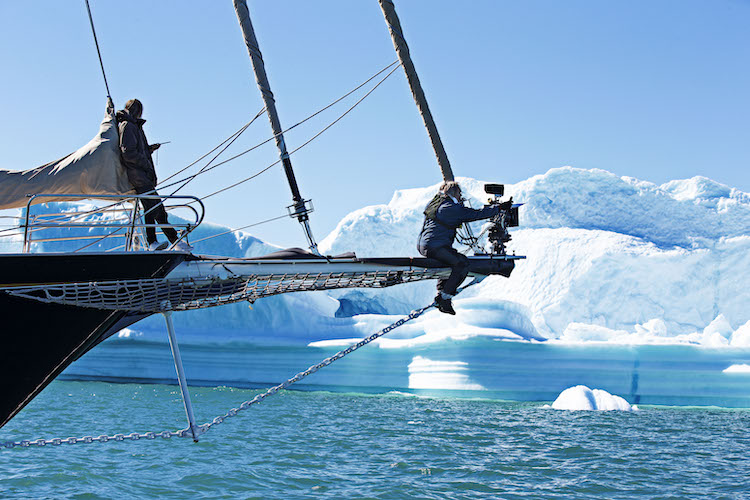
Courtesy of Sony Pictures Classics Aquarela also lands in Miami in the midst of Hurricane Irma, with a slow, punishing drive down wind- and rain-lashed streets, palm trees bending unnaturally. Once again, the death-defying matter of camera placement becomes apparent.
Amidst these locations are hallucinogenic sequences of endless, crashing waves and rushing water; almost vertigo-inducing, they could literally cause seasickness. Long abstract clips of the ocean, both over- and under-water, in color and black and white, are like moving tapestries that have an almost narcotic effect. The movie has a definite impact on the nervous system; trippy for sure, but it’s not always a good trip, nor is it meant to be.
It all ends at Angel Falls in Venezuela, a gorgeous and relatively peaceful evocation of water, and a welcome end to what has been a thrilling, sometimes overwhelming ride. It will take a little while to get back your land legs afterwards.
Aquarela opens on Friday, August 16, at the Landmark at 57 West, AMC Empire (at 48 frames per second), and the Angelika Film Center (also at 48 fps).
—Marina Zogbi

